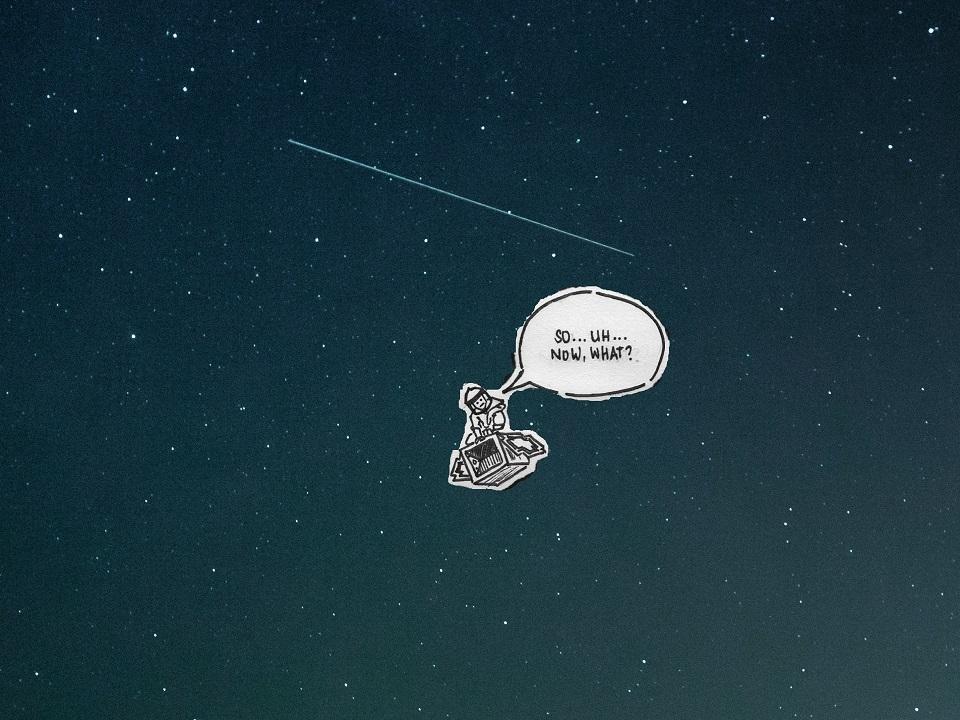Why the Philippines needs a national space agency

For someone whose profession involves keeping his eyes on the stars, one of the only three Filipino astrophysicists has recently been devoting more time and energy to being on the ground.
As the program leader of the National Space Development Program (NSDP) under the Philippine Council for Industry, Energy and Emerging Technology Research and Development (PCIEERD), Dr. Rogel Mari Sese coordinates with legislators, government institutions, and fellow space scientists in laying the groundwork for the Philippines’ very own national space agency—one giant leap for a nation whose way of life has been influenced by celestial bodies long before its earliest colonizers could.
Sese’s team is also pushing for a policy that would cover all space-related functions on a national level. This space policy will provide direction for the government in terms of space development and utilization, with the aforementioned space agency functioning as the main implementing body for all space-centric endeavors.
“[Currently,] a lot of government agencies are doing space-related work, but it’s all uncoordinated,” says Sese. “[With the space agency and space policy], instead of having it all under separate branches or agencies of the government, it will all be unified.”
A stellar history
Long before the Spanish era, farmers and fishermen used their awareness of the stars mainly for logistical and time-keeping purposes. Early Filipino communities even had traditional names for them, varying across different ethnic groups. “In that sense,” says Sese, “since ancient times, Filipinos have been using astronomy.”
Modern astronomy in the Philippines began with the establishment of the Observatorio Meteorologico de Manila in 1865 by Jesuit priests. When Malate, the original location of the Observatorio, was bombed during World War II, the institute’s timekeeping and weather observation functions ceased; however, it resumed operations in Baguio, and was ultimately moved to the Ateneo de Manila campus in 1963 and renamed the Manila Observatory.
Another notable milestone in the history of space science in the Philippines was the development of a military-oriented, laser-guided rocket program called Project Santa Barbara in the 1970s, with Caballo Island near Corregidor serving as its primary testing site. Eventually, the Philippines launched its first satellite, Agila II, in 1997. A private endeavor, it was built primarily for telecommunications, and was sold in 2010 to a foreign company.
Last April, Diwata-1, the first microsatellite owned by the Philippine government and developed by Filipino engineers, was launched into orbit. This experimental project was designed for capacity building—to train Filipinos how to build and operate satellites. A complementary program, Philippine Earth Data Resources Observation (Pedro), was developed as a ground station for receiving signals from both Diwata-1 and foreign satellites.
Space for improvement

Perhaps the most visible application of space technology is weather monitoring, says Sese. “That's a given, because [it involves] seeing which area of the country will be hit by a typhoon, and there's no other way to do that than through satellites.”
The truth, however, is that space science plays a significant role in our everyday lives—perhaps even to a much greater extent than most of us realize.
Remote sensing, for instance, involves taking satellite images at set intervals in order to assess the overall environmental conditions in the country over a given period of time. This is particularly useful in agriculture, as it is vital in the monitoring and maintenance of various crops and farmlands, and may even be the key to solving the country's rice sufficiency issue.
Space technology is also a pillar of modern-day communications, as satellites are used as transmission channels for TV, mobile phones, broadband, and the like. The Global Positioning System (GPS) function in today’s smartphones, which relies on transmissions from GPS satellites, is crucial in a wide range of applications, from the practical to the entertaining.
“Even secure military communications are transmitted through satellites,” shares Sese, citing the country’s current issues with unsanctioned activities along the West Philippine Sea as a situation that requires a satellite that can monitor the area on a regular basis.
Furthermore, without space science, technologies such as the CT scan (a system used in various medical functions shaped by efforts to improve digital image processing for enhancing photos of the moon) and thermal blankets (a staple of emergency first-aid kits and disaster relief operations, but was originally designed to serve as insulation coating for satellites) would not exist.
Unfortunately, the Philippines’ continued dependence on foreign space technology means that, should assistance from other countries be cut abruptly, the country would no longer be able to take advantage of the functionalities that have become crucial parts of everyday life.
As Sese puts it, “People don’t really care about space systems... until they start to fail.”
Counting dollars, counting stars
After doing a cost-benefit analysis, Sese’s team learned that the Philippines currently spends P3.5 billion per year on acquiring satellite images, space communications capabilities, and other space technology applications from foreign providers. Based on Sese’s calculations and the current state of the market, it would take only P2.5 billion to run a national space program that would already cover all of these functions.
“For every peso the Philippines would spend on a space program, the quantifiable return of investment would be about P2.50,” Sese stresses. “So it’s not a money-losing venture—it’s a money-making venture, and that’s just based on infrastructure savings alone.”
He adds, “The usual question we get is, ‘Why do we need space? We have a whole lot of other problems, like poverty, economic growth, etc.’ Things like that. [But] when you’re in the field of space, you know what would be beneficial [to the country] and what won’t be. The end goal here is really to use space for national security and development. To improve the status of the country. It's not just for conducting research.”
According to Sese, one of the biggest challenges in establishing a national space agency is a lack of awareness about how investing in space science will provide sustainable, long-term benefits to the country.
“In the Philippines, we fill the stomach first before the brain, without realizing that when you fill the brain, essentially, you're going to fill the stomach in the end.”
Launch pad
This November, the Philippines will be hosting the 23rd Asia-Pacific Regional Space Agency Forum, a meeting of the various space agencies in the region. The irony of this situation is not lost on Sese. “At least we’ll have the bill filed before that meeting, just to say, ‘Okay, we’re getting there,’” he laughs.
Interestingly, despite how some fail to see space science as a viable career option here in the Philippines, professionals in space-related industries are actually among the highest-paid in the world. In relation to that, the establishment of a national space agency would also mean more employment opportunities. As Sese notes, for every person working in space science or any space-related field, there are at least four other people (technicians, assistants, cooks, etc.) who end up becoming directly employed as a result.
“At some point in every person’s life, that person was fascinated with stars, or dreamed of becoming an astronaut,” shares Sese. “The problem that we encounter is that this kind of interest is usually not sustained as they grow older.”
To address this issue, Sese has been working under the Philippine Space Science Education program, teaching young children about space and nurturing their interest by answering common questions (“Why is the sky blue?” “How high is the sky?”) and using them as a gateway to teach basic concepts in biology, physics, chemistry, and other branches of science.
“As they say, ‘Astronomy is the gateway to the sciences.’”
Starry-eyed
Despite his busy schedule, Sese still finds time to look at the stars. “I make it a point that at least on a daily or weekly basis, I spend a few moments looking up and wondering about what's up there.”
Ongoing talks with legislators have so far yielded positive results, enough to make it a reasonable projection that the space agency can be established by 2017 or 2018. When that happens, it will be a major step in the country’s slow but steady march through the space age.
Until then, the dream of a “space-ready” Philippines will continue to live on, fueled by hope and hard work—a glimmer of light in a seemingly endless void. — BM, GMA News




